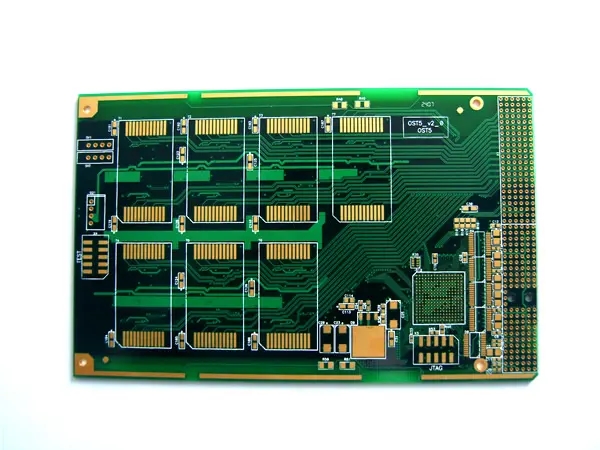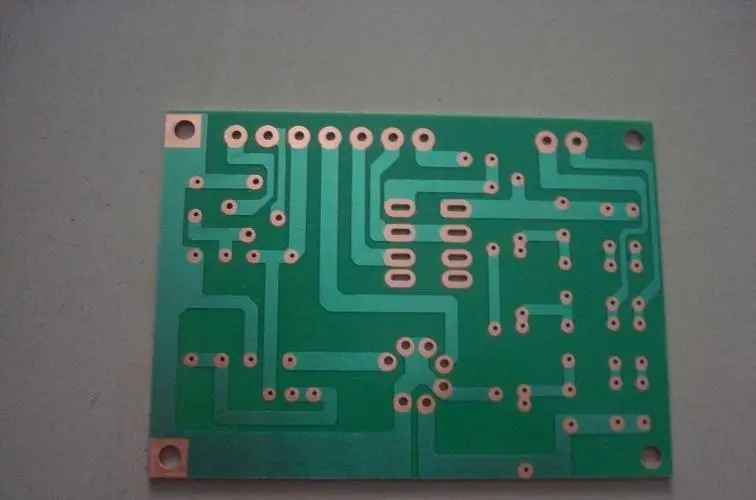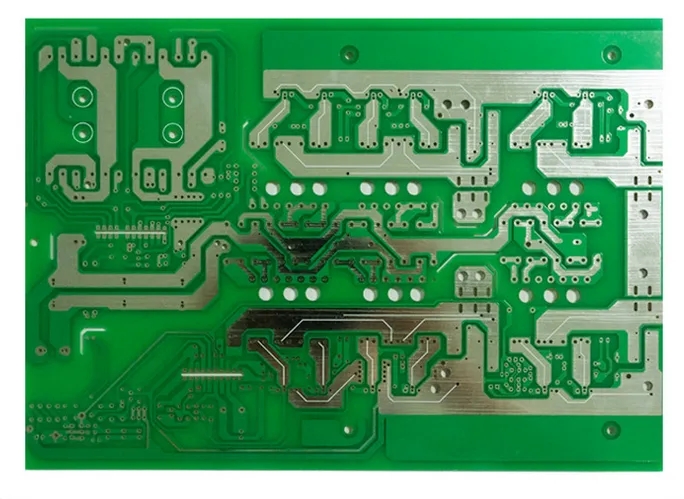

How to Solve the Power Noise Interference on the HF Board
circuit board manufacturers, circuit board designers and PCBA manufacturers explain how to solve the power noise interference on high-frequency boards
Distributed noise caused by inherent impedance of power supply. In high frequency board/high frequency circuit, power supply noise has great influence on high frequency signal. Therefore, a low-noise power supply is required first. Clean ground and clean power supply are equally important; Common mode field interference. It refers to the noise between the power supply and the ground. It is the interference caused by the common mode voltage on the common reference plane and the loop formed by the interfered circuit of a power supply. Its value depends on the relative strength of the electrIC field and magnetic field.
In the high frequency board, the more important type of interference is power noise. Through the systematic analysis of the characteristics and causes of the power supply noise on the high-frequency board, and combining with the engineering application, some very effective and SIMple solutions are proposed.
Analysis of power supply noise
Power supply noise refers to the noise generated by or induced by the power supply itself. The interference is shown in the following aspects:
1. Distributed noise caused by inherent impedance of power supply. In high frequency circuit, power supply noise has great influence on high frequency signal. Therefore, a low-noise power supply is required first. Clean ground and clean power supply are equally important.
Ideally, the power supply has no impedance, so there is no noise. However, the actual power supply has a certain impedance, and the impedance is distributed on the whole power supply, so the noise will also be superimposed on the power supply. Therefore, the impedance of the power supply should be reduced as much as possible, and it is better to have a special power layer and ground plane. In the design of high frequency board/high frequency circuit, the design of power supply in the form of layer is generally better than that in the form of bus, so that the loop can always follow the path with the least impedance. In addition, the power board must provide a signal loop for all generated and received signals on the high-frequency board, which can minimize the signal loop and thus reduce noise.

2. Power line coupling. It refers to the phenomenon that AC or DC power lines transmit electromagnetic interference to other equipment. This is the interference of power supply noise to high-frequency circuit indirectly. It should be noted that the noise of the power supply is not necessarily generated by itself, but may also be the noise induced by external interference, and then the noise is superimposed with the noise generated by itself
(radiation or conduction) to interfere with other circuits or devices.
3. Common mode field interference. It refers to the noise between the power supply and the ground. It is the interference caused by the common mode voltage on the common reference plane and the loop formed by the interfered circuit of a power supply. Its value depends on the relative strength of the electric field and magnetic field.
On this channel, the drop of Ic will cause common mode voltage in the series current loop, affecting the receiving part. If the magnetic field is dominant, the value of common mode voltage generated in the series ground circuit is:
Vcm=—(△B/△t) × S(1)
In equation (1) Δ B is the change of magnetic induction intensity, Wb/m2; S is the area, m2.
If it is an electromagnetic field, when its electric field value is known, its induced voltage is:
Vcm=(L × h × F × E/48)(2)
Equation (2) is generally applicable to L=150/F and F is the electromagnetic wave frequency MHz.
If this limit is exceeded, the calculation of the maximum induced voltage can be simplified as:
Vcm=2 × h × E(3)
3. Differential mode field interference. It refers to the interference between the power supply and the input and output power lines. In the actual PCB design, the author found that its proportion in power noise is very SMAll, so it can not be discussed here.
4. Line to line interference. Refers to interference between power lines. When mutual capacitance C and mutual inductance M1-2 exist between two different parallel circuits, if there is voltage VC and current IC in the interference source circuit, the following will appear in the interfered circuit:
a. The voltage through capacitive impedance coupling is
Vcm=Rv*C1-2*△Vc/△t(4)
In Formula (4), Rv is the parallel value of the near end resistance and the far end resistance of the interfered circuit.
B. Series resistance through inductive coupling
V=M1-2*△Ic/△t(5)
If there is common mode noise in the interference source, the inter line interference generally takes the form of common mode and differential mode.
Countermeasures for eliminating power noise interference
According to the different forms and causes of power noise interference analyzed above, the conditions of its occurrence can be destroyed, and the interference of power noise can be effectively suppressed. The solutions are:
1. Power regulator. A cleaner power supply can greatly reduce the power supply noise.
2. Place the power cord. In order to reduce the signal circuit, the noise can be reduced by placing the power line beside the signal line.
3. Wiring. The input and output lines of the power supply shall not be laid on the edge of the dielectric plate, otherwise it is easy to generate radiation and interfere with other circuits or equipment.
4. Isolate sensitive elements. Some components, such as phase-locked loop (PLL), are very sensitive to power noise and should be kept as far away from the power supply as possible.
5. Avoid overlapping of separate power supplies between different layers. Try to stagger them, otherwise the power supply noise will be easily coupLED through parasitic capacitors.
6. Power isolation transformer. Separate the common mode ground loop of power supply loop or signal cable, which can effectively isolate the common mode loop current generated in high frequency.
7. The connecting wire needs enough ground wires. Each signal needs its own special signal loop, and the loop area of the signal and loop should be as small as possible, that is, the signal and loop should be parallel.
8. Pay attention to the through-hole on the high-frequency plate. The through hole makes it necessary to etch an opening on the power layer to make room for the through hole to pass through. If the opening of the power layer is too large, it will inevitably affect the signal circuit. The signal will be forced to bypass, the circuit area will increase, and the noise will increase. At the same time, if some signal lines are concentrated near the opening and share this circuit, the common impedance will cause crosstalk.
9. Analog and digital power supplies shall be separated. High frequency devices are generally very sensitive to digital noise, so they should be separated and connected together at the inlet of the power supply. If the signal needs to span both analog and digital parts, a loop can be placed at the signal span to reduce the loop area.
10. In order to prevent the interference of power supply noise on high-frequency boards/circuit boards and the accumulated noise caused by external interference on power supply, a bypass capacitor can be connected to the interference path (excluding radiation) and grounded, so that the noise can be bypassed to the ground to avoid interference with other equipment and devices.
11. Place power noise filter. It can effectively suppress the noise inside the power supply and improve the anti-interference and safety of the system. Moreover, it is a bidirectional RF filter, which can not only filter out the noise interference introduced from the power line (to prevent interference from other equipment), but also filter out the noise generated by itself (to avoid interference with other equipment), which can suppress the common mode interference of the series mode.
conclusion
The power supply noise is directly or indirectly generated from the power supply and interferes with the circuit. When suppressing its influence on the circuit, a general principle should be followed, that is, on the one hand, the influence of the power supply noise on the circuit should be prevented as much as possible; on the other hand, the influence of the outside world or the circuit on the power supply should be reduced as much as possible to avoid worsening the power supply noise. Circuit board manufacturers, circuit board designers and PCBA manufacturers will explain how to solve the power noise interference on high-frequency boards.
然后
聯(lián)系
電話熱線
13410863085Q Q

微信

- 郵箱










